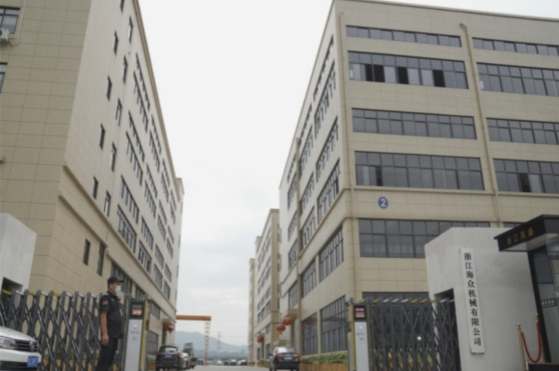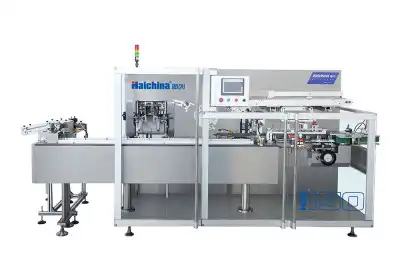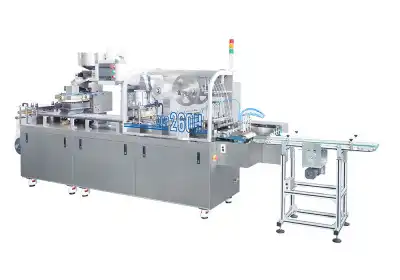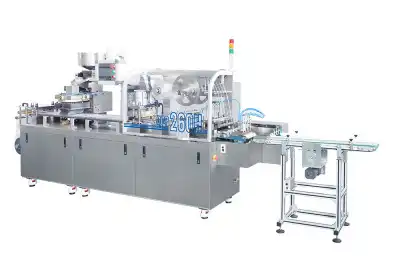A Complete Guide on Blister Packaging Machine
Blister packaging machines have revolutionized the pharmaceutical industry, offering efficient and reliable solutions for protecting and presenting medications. This comprehensive guide explores the intricacies of blister packaging technology, its applications in the pharmaceutical sector, and the key features that make these machines indispensable. From understanding the basic principles to exploring advanced functionalities, we'll delve into how pharma blister packaging machines ensure product integrity, enhance shelf life, and streamline production processes. Whether you're a pharmaceutical manufacturer or simply curious about packaging innovations, this article will provide valuable insights into the world of blister packaging machinery.

Understanding Blister Packaging Technology
The Fundamentals of Blister Packaging
Blister packaging is a term that encompasses a range of packaging methods where products are sealed between a formable web and a lidding material. In the pharmaceutical industry, this typically involves a plastic cavity or pocket made from thermoformed plastic, which is then sealed with a backing of paperboard or aluminum foil. This method provides excellent protection against external factors such as moisture and contamination while offering tamper-evident features.

Components of a Blister Pack
A typical blister pack consists of two primary components: the blister, which is the cavity or pocket that holds the product, and the lidding, which seals the blister. The blister is usually made from a thermoformable plastic like PVC, PET, or PVDC, while the lidding can be aluminum foil, paper, or a combination of materials. The choice of materials depends on the product's sensitivity to moisture, light, and oxygen, as well as considerations within the blister packaging machine pharmaceutical industry.

Advantages of Blister Packaging in Pharmaceuticals
Blister packaging offers numerous benefits for pharmaceutical products. It provides excellent barrier properties, protecting medications from environmental factors that could degrade their efficacy. The individual compartments for each dose help improve patient compliance and reduce the risk of contamination. Moreover, the transparent nature of many blister packs allows for easy visual inspection of the product, ensuring quality control throughout the supply chain.

The Mechanics of Blister Packaging Machines
Operational Principles
A blister packaging machine for the pharmaceutical industry operates on a series of precise steps. Initially, the machine forms the plastic sheet into cavities or blisters through thermoforming or cold forming. Next, it accurately places the product into these cavities. The filled blisters then move to the sealing station, where the lidding material is applied and sealed, typically using heat and pressure. Finally, the machine cuts and perforates the blister packs into their final form.
Types of Blister Packaging Machines
There are several types of blister packaging machines available, each suited to different production needs. Rotary blister machines are ideal for high-speed production, while flat-plate machines offer flexibility for smaller batches. Some machines are designed for specific pharmaceutical formats, such as tablet blister packaging machines or capsule blister packaging machines. Advanced models may incorporate additional features like in-line printing or integrated quality control systems.
Key Components and Their Functions
A pharma blister packaging machine comprises several crucial components. The forming station shapes the plastic material into blisters, while the filling station accurately places products into these cavities. The sealing station applies and seals the lidding material, and the cutting station separates individual blister packs. Many modern machines also include vision systems for quality control, rejection mechanisms for faulty packs, and user-friendly interfaces for easy operation and monitoring.
Optimizing Blister Packaging for Pharmaceutical Applications
Material Selection and Compatibility
Choosing the right materials is crucial in pharmaceutical blister packaging. The blister material must be compatible with the drug formulation to prevent any chemical interactions that could affect the medication's efficacy. Common materials include PVC for basic protection, PVDC for enhanced moisture barrier, and COC for extreme moisture sensitivity. The lidding material, often aluminum foil, must provide an adequate seal while allowing easy access for the end-user.
Compliance with Regulatory Standards
In the pharmaceutical industry, blister packaging machines must adhere to strict regulatory standards. This includes compliance with Good Manufacturing Practices (GMP), FDA regulations, and other international standards. Machines should be designed for easy cleaning and validation, with features that ensure consistent quality and traceability. Many modern blister packaging machines incorporate data logging and reporting functions to aid in regulatory compliance.
Innovations in Blister Packaging Technology
The field of blister packaging is continually evolving, with new innovations enhancing efficiency and functionality. Recent advancements include smart blister packs with embedded sensors for tracking medication adherence, eco-friendly blister materials for reduced environmental impact, and high-barrier films for extending product shelf life. Some cutting-edge blister packaging machines now incorporate AI and machine learning for predictive maintenance and optimal performance tuning.
Conclusion
Blister packaging machines have become an integral part of the pharmaceutical industry, offering unparalleled protection and presentation for a wide range of medications. From ensuring product integrity to enhancing patient compliance, these machines play a crucial role in modern pharmaceutical manufacturing. As technology continues to advance, we can expect even more sophisticated and efficient blister packaging solutions, further improving drug safety, accessibility, and user experience. For pharmaceutical companies looking to optimize their packaging processes, investing in a high-quality blister packaging machine is a step towards enhanced product quality and operational efficiency.
Contact Us
For more information about our range of blister packaging machines and how they can benefit your pharmaceutical operations, please contact us at [email protected]. Our team of experts is ready to help you find the perfect packaging solution for your needs.
References
Johnson, M. (2022). Advances in Pharmaceutical Packaging: A Comprehensive Review. Journal of Pharmaceutical Sciences, 111(5), 1245-1260.
Smith, A., & Brown, B. (2021). Blister Packaging Technology: Current Trends and Future Prospects. Packaging Technology and Science, 34(3), 178-195.
García-Arca, J., Prado-Prado, J. C., & Garrido, A. T. G. (2020). Packaging Logistics: Promoting Sustainable Efficiency in Supply Chains. International Journal of Physical Distribution & Logistics Management, 50(6), 617-639.
Wang, Y., & Liu, J. (2023). Smart Packaging in Pharmaceuticals: Enhancing Patient Compliance and Drug Safety. Drug Delivery and Translational Research, 13(2), 456-470.
Thompson, C. (2021). Material Innovations in Pharmaceutical Blister Packaging. Pharmaceutical Technology, 45(9), 36-42.
Rodriguez, E., & Martinez, L. (2022). Regulatory Challenges and Opportunities in Pharmaceutical Packaging. Regulatory Affairs Professionals Society (RAPS) Journal, 14(3), 85-97.

Submit the form now to get a unique quote!

ZHEJIANG HAIZHONG MACHINERY CO., LTD.
Popular Blogs
-
 Successful caseProducts and services
Successful caseProducts and servicesHow to Train Employees to Operate a Bottle Packing Machine Effectively?
-
 Successful caseIndustry insights
Successful caseIndustry insightsThe Blister Packaging Process: A Complete Step-by-Step Guide
-
 Successful caseComparative analysisIndustry insights
Successful caseComparative analysisIndustry insightsWhat Type of PVC Is Best for Blister Packing Machines?